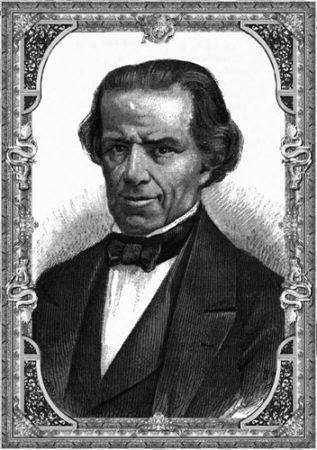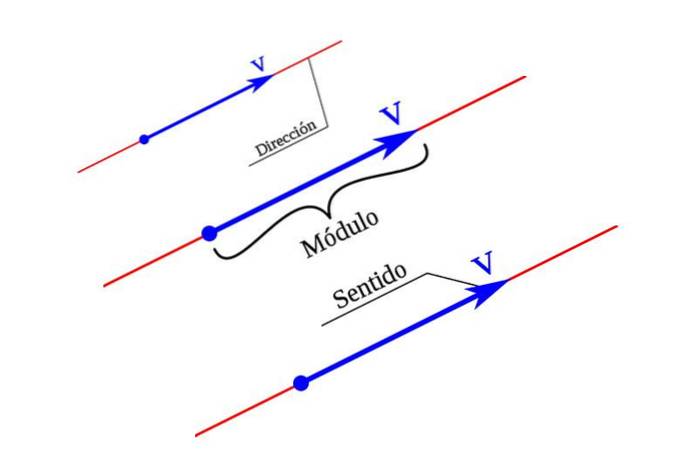
McLane-Ocampo Treaty Characteristics and Consequences
The McLane-Ocampo Treaty It was signed on December 14, 1859 between the government of the United States and that of Mexico, headed at that time by Benito Juárez. The agreement, officially called the Traffic and Trade Treaty, was negotiated by Melchor Ocampo and Robert Milligan McLane, who ended up naming it.
Through the document, Mexico ceded three corridors within its territory to the United States. One of them, in the Gulf of Mexico, and the other two near the northern border. In addition, it established another series of advantages for Americans, such as the free transit of certain goods.

In return, the United States promised to pay a significant amount of money to the Mexican government. Apart from this, the signature carried something that Juárez longed for: the recognition of the country by its northern neighbor..
According to historians, during some part of the negotiations the Americans also demanded that a clause be included for a possible annexation of Baja California, although it was never included. Finally, due to the Civil War, the United States Congress did not ratify the agreement.
Article index
- 1. Background
- 1.1 Mexico
- 1.2 United States
- 1.3 US offer
- 2 Features
- 2.1 Other clauses
- 2.2 US obligations
- 3 consequences
- 3.1 Recognition
- 4 References
Background
Mexico
The history of Mexico after achieving independence had been very turbulent. From the beginning, there was a confrontation (often armed) between conservatives and liberals. Both groups alternated in power or, on occasions, even formed simultaneous governments.
The ideological and political confrontation seemed to have no end. Frequently, the two sides looked for support abroad, trying to unbalance the balance.
In the second half of the 19th century, the Conservatives tried to obtain support from European governments, while the Liberals did so with the United States..
The conflict called the War of the Reform was one more chapter of that confrontation. The Conservatives established their government in the capital. The Liberals, led by Benito Juárez, created their own constitutionalist cabinet.
Juárez, with the negotiations with the Americans, tried to gain their recognition and support for his position. In addition, some historians claim that the United States threatened to invade the country in case of not reaching an agreement..
USA
In the neighbor to the north, two issues stimulated territorial expansion. This had been continuous since its independence and, just a few years before the McLane-Ocampo Treaty, extensive Mexican territories had already been annexed..
The first issue that had to do with this search for new lands was economic. Not only in its close borders, but also by sea. His intention was to compete with the British and French in trade with Asia.
For that, they tried to find an interoceanic passage between the Pacific and the Atlantic. There weren't many places to build it. Only Panama, Nicaragua or Mexico could have their headquarters. Immediately, the US government began to pressure the three countries.
The other consideration was more philosophical. As early as 1845, the concept of Manifest Destiny had appeared in the US It is general features, it stated that the country was a chosen people destined to control the entire continent, starting with North America..
American offer
In this context, William Churchwell, an American agent, recommended that his government recognize the Mexican liberal camp. In return, he wanted to obtain the sovereignty of Baja California and freedom of transit through the Isthmus of Tehuantepec.
Buchanan, president of the United States at the time, sent Robert McLane as a representative to try to negotiate with Juárez. The Mexican interlocutor was Melchor Ocampo, foreign minister.
The first proposal, the incorporation of Baja California into the United States, was rejected from the beginning. On December 14, 1859, the negotiations had ended and the document was presented.
Characteristics
The main terms of the treaty established three different corridors that would be made available to the United States..
The first in which they had full transit rights ran through the Isthmus of Tehuantepec, from the port of the same name to Coatzacoalcos in the Gulf of Mexico.,
The second corridor was drawn from Guaymas to Rancho de Nogales and another town on the border between the two signatory countries..
Finally, the third step was agreed to start from a point located between Camargo and Matamoros and end in Mazatlán.
Mexico would retain its sovereignty over the three zones. Although the word perpetuity appeared in the treaty, in reality the Mexican government could withdraw from the agreement at any time.
Other clauses
According to the negotiated document, all the traffic that circulated through the delimited areas would be free of any tariff or tax. This applied to both the merchandise and the military that the United States wanted to displace..
Mexico was obliged to defend the American right to that free passage, even using the army. In addition, it contracted the obligation to build storage structures on both sides of the isthmus.
US obligations
For its part, the United States had to pay $ 4 million to Mexico. Of that amount, half would be paid at the time, while the remaining 2 million would be used to pay the possible claims of United States citizens who could suffer losses attributable to Mexico..
In addition to that, the US government would recognize the government formed by the Liberals of Benito Juárez.
Consequences
Although the signing of the treaty did have some consequences, it was never actually fully implemented.
The reason was that, despite the fact that Ocampo's signature legitimized him in Mexico, in the United States he still had to go through the process of being approved in Congress.
Finally, after submitting to the corresponding votes, the US congressmen rejected the Treaty. The first cause, according to the experts, was that they did not trust one hundred percent of the victory of Juárez in his fight against the conservatives.
In addition, in the United States the possibility of a civil war, later called the Secession, was beginning to be glimpsed. For many congressmen, the terms of the Treaty could end up favoring the Southerners.
Recognition
Despite this rejection, Juárez got the support and recognition of the US government. Although it is not possible to know what would have happened if he had not succeeded, the support helped him win the War of Reform.
References
- Carmona Dávila, Doralicia. The McLane-Ocampo Treaty is signed, granting the United States a perpetual right of transit through the Isthmus of Tehuantepec. Obtained from memoriapoliticademexico.org
- Gil Robles, Hermann. McLane-Ocampo Treaty. Obtained from diariocultura.mx
- National Palace. Juárez and the McLane - Ocampo treaty. Obtained from historia.palacionacional.info
- The New York Times Archives. OUR RELATIONS WITH MEXICO .; Text of the McLane-Ocampo Treaty. Supplementary Articles Authorizing American Intervention. Retrieved from nytimes.com
- Encyclopedia of Latin American History and Culture. McLane-Ocampo Treaty (1859). Retrieved from encyclopedia.com
- Revolvy. McLane-Ocampo Treaty. Retrieved from revolvy.com
- Ponce, Pearl T. "As Dead as Julius Caesar": The Rejection of the McLane-Ocampo Treaty. Retrieved from highbeam.com



Yet No Comments